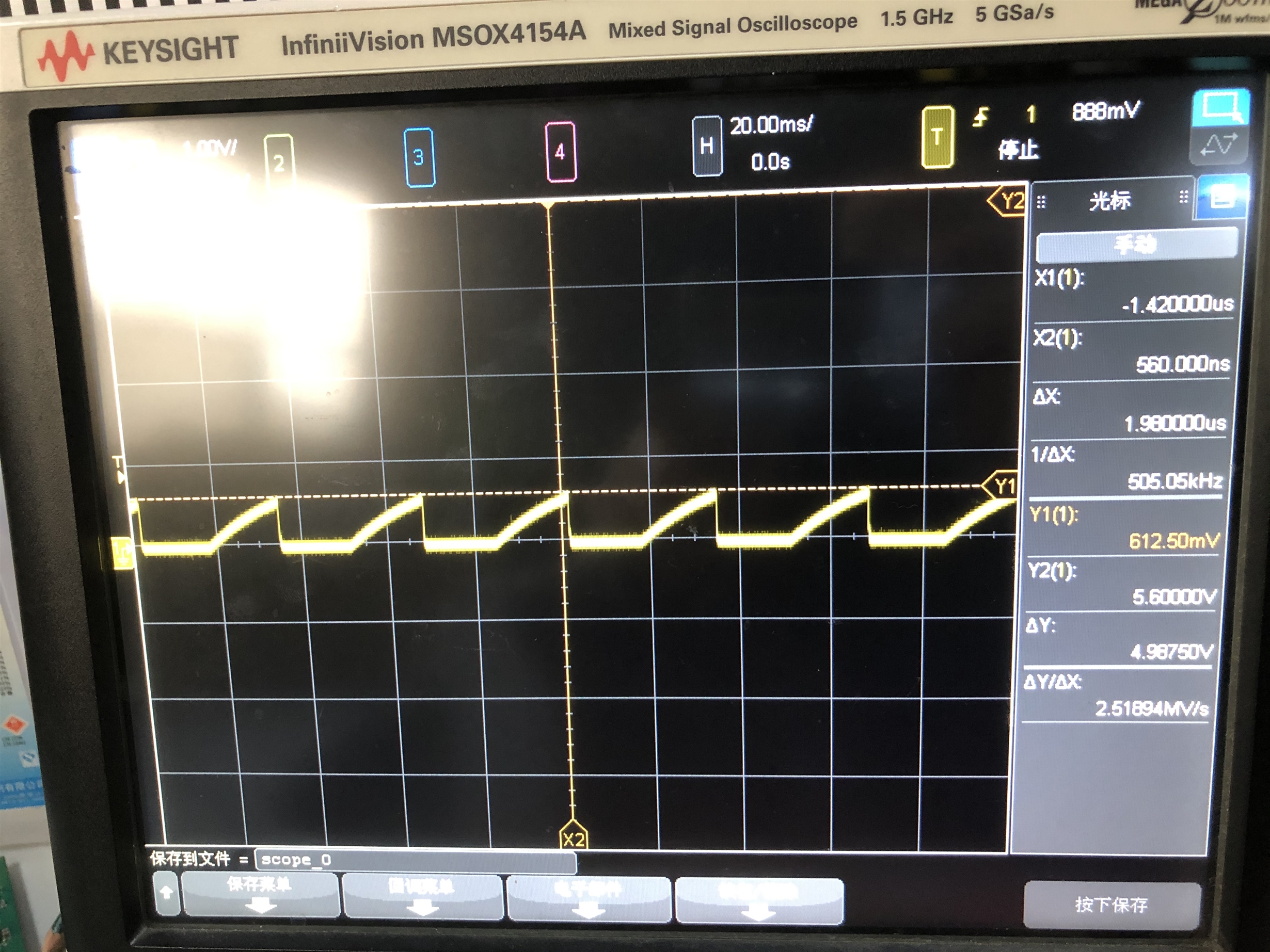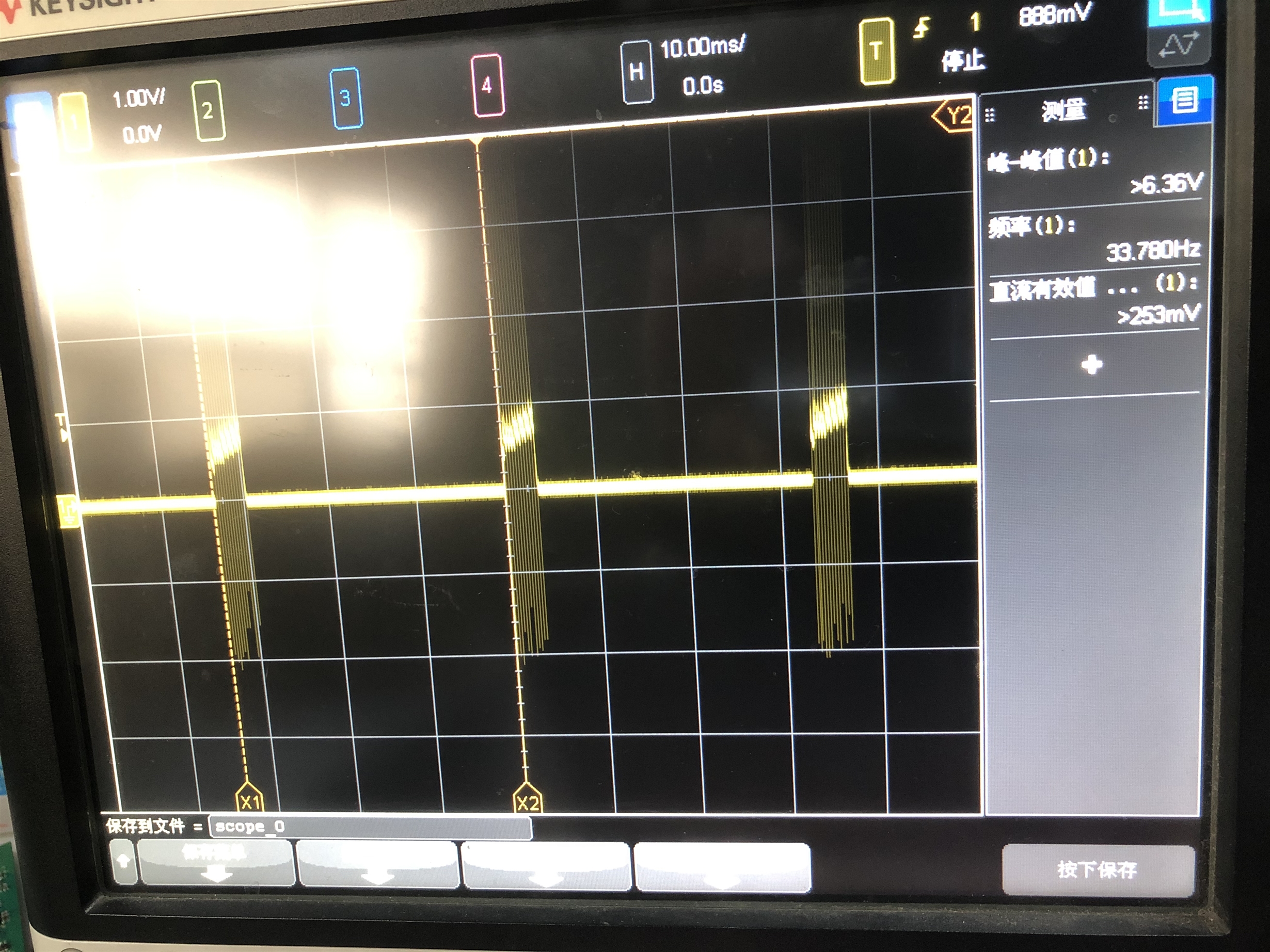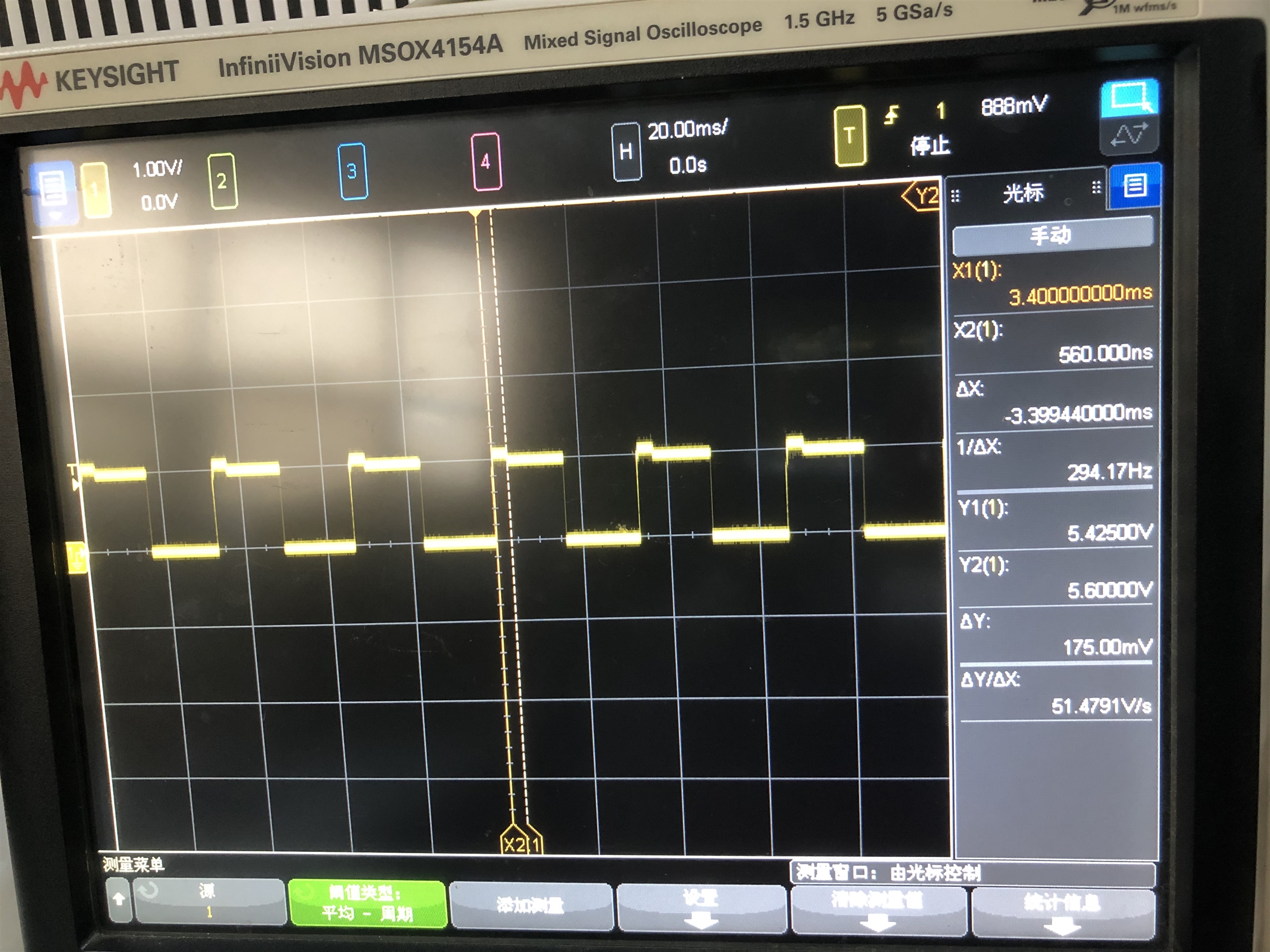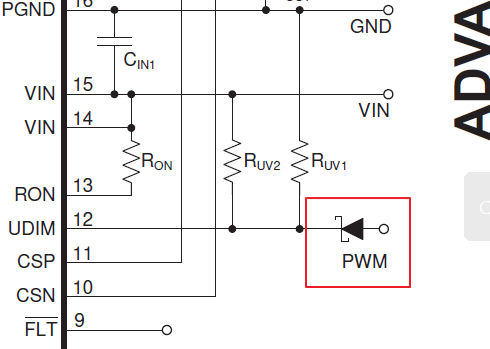Other Parts Discussed in Thread: LM3409
Dear team,
My customer tested PWM dimming in our EVM. They apply an external 30Hz PWM signal to our EN pin. But the customer found that PWM dimming can't work normally at first. When they remove C6 component, the PWM dimming works normally. But we don't understand why this cap has a impact to the PWM dimming. Could you please help analyze this issue?
When adding C6, the IADJ pin and LED+ waveform is as below,
IADJ,
LED+, the pulse voltage should be 5V, but currently the voltage is only around 0.6V.
After removing C6, the IADJ and LED+ waveform becomes normal.
IADJ, but still have a discontinuity.
Thanks & Best Regards,
Sherry






